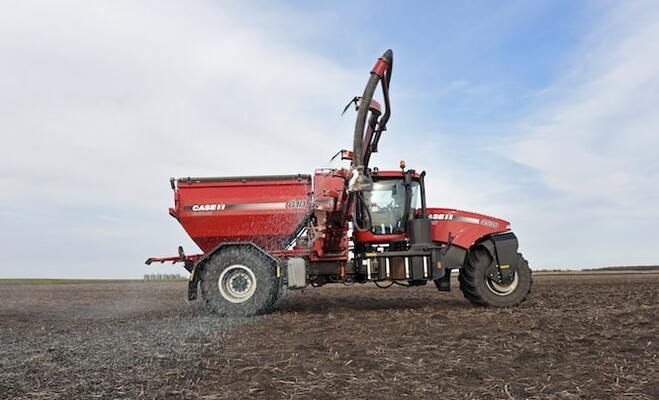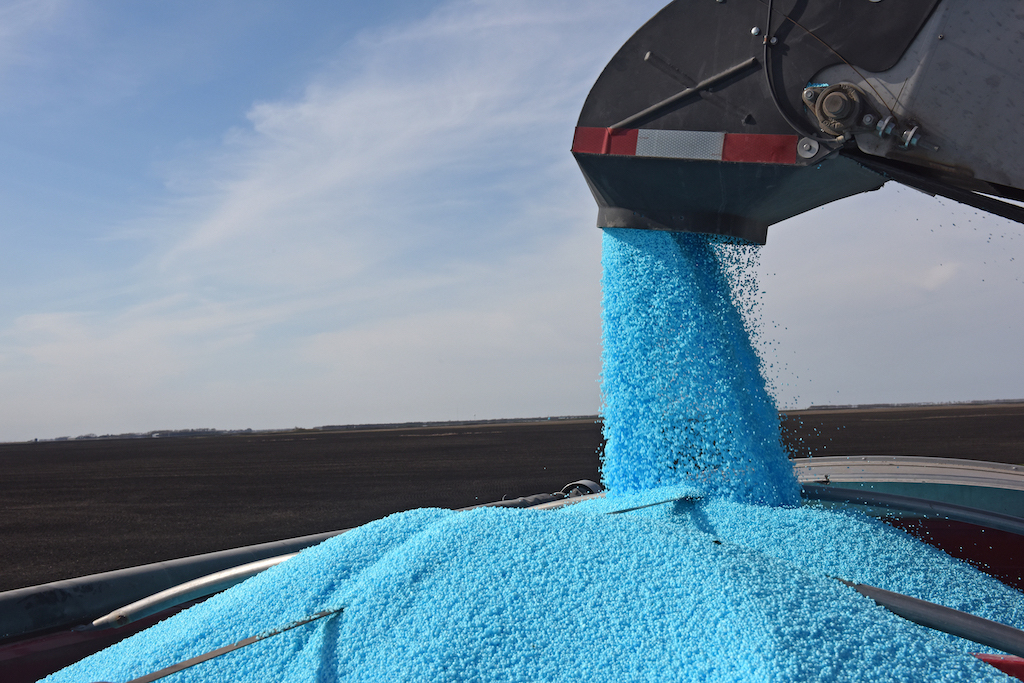
Protecting nitrogen is critical for a healthy crop, yet as much as 95% of nitrogen investments are at risk of loss. And when nitrogen is lost, potential yield and profit are lost too – the biggest risk to growers. Nitrogen is one of three main nutrients needed for plant growth and development. There is no denying that nitrogen is an essential nutrient for crop production and an adequate supply is required for proper plant growth.
As growers and retailers work together to execute their fertility plans, it’s important to consider how to protect this important investment. Nitrogen accounts for more than 57% of total fertilizer use to ensure crops have the available nitrogen they need.
Whether applied as urea, UAN or manure, nitrogen can be lost to the environment in one of three ways.
- Denitrification occurs when soil bacteria use nitrate for their respiration in place of oxygen in the air. This process occurs more rapidly in warm, wet soils that contain an abundance of nitrates. Soils can experience a 5-35 percent loss rate.
- Leaching, or washing away of nitrogen. Nitrogen is highly mobile in the soil; nitrate leaching occurs when the nitrates are washed from the soil in drainage water. Nitrogen is more prone to leaching when soils are wet and pore spaces are saturated.
- Volatilization is caused by nitrogen sources, such as urea, converting from organic form to ammonia gases, which are released into the atmosphere. Volatilization most commonly occurs in warm moist soils when the urea is on, or close to, the soil surface. Volatilization is reduced when manure and urea fertilizers are applied, when soil and air temperatures are cool, or when rain occurs soon after application.
Protecting Fertilizer Investments

To protect above ground nitrogen from ammonia volatilization and below ground nitrogen from denitrification and leaching, CHS agronomy offers its N-Edge portfolio of nitrogen stabilizer products.
Use of N-Edge products can help protect against nitrogen loss during these situations:
- When fertilizer is surface applied, especially to moist soils.
- Under high crop residue, such as reduced or no-till conditions.
- When warm temperatures, high soil pH, and other weather and field challenges lead to increased nitrogen loss at or near the soil surface.
The latest product in the line-up, N-Edge® Pro is an NBPT and DCD combination nitrogen stabilizer that provides protection against volatility leaching and denitrification in both below and above ground applications.
What is NBPT?
N-(n-butyl) thiophosphoric triamide, commonly known as NBPT, is a urease inhibitor that protects against nitrogen loss through the volatilization stage of the nitrogen cycle. To protect nitrogen available to the plants above ground, use of NBPT slows down the process of urease enzymes breaking down and volatizing into the atmosphere. When NBPT stabilizers are blended with urea it can provide above ground protection of applied nitrogen, protecting fertilizer investments.
What is DCD?
Nitrogen loss through the de-nitrification and leaching stages of the nitrogen cycle takes place below ground. To protect nitrogen available to plants below the surface, nitrification inhibitor Dicyandiamide, or DCD, can be, can be used to shut down and block the Nitrosomonas bacteria activity in the soil that is responsible for the conversion of ammonium to nitrite and then to nitrate, an unstable source of nitrogen for the crop.

Nitrogen Management Solutions
There are a lot of ways that nitrogen can end up out of reach. To protect above-ground nitrogen from ammonia volatilization and below– ground nitrogen from denitrification and leaching, CHS agronomy offers its N-Edge portfolio of nitrogen stabilizer products.
Use of N-Edge products, which can help protect against nitrogen loss, is especially critical during these situations:
- When fertilizer is surface applied, especially to moist soil.
- Under high crop residue. such as reduced or no-till conditions.
- When warm temperatures, high soil pH, and other weather and field challenges lead to increased nitrogen loss at or near the soil surface.
For more information on N-Edge Pro and the full N-Edge portfolio, visit chsagronomy.com or talk to your CHS agronomy represenatitive.

